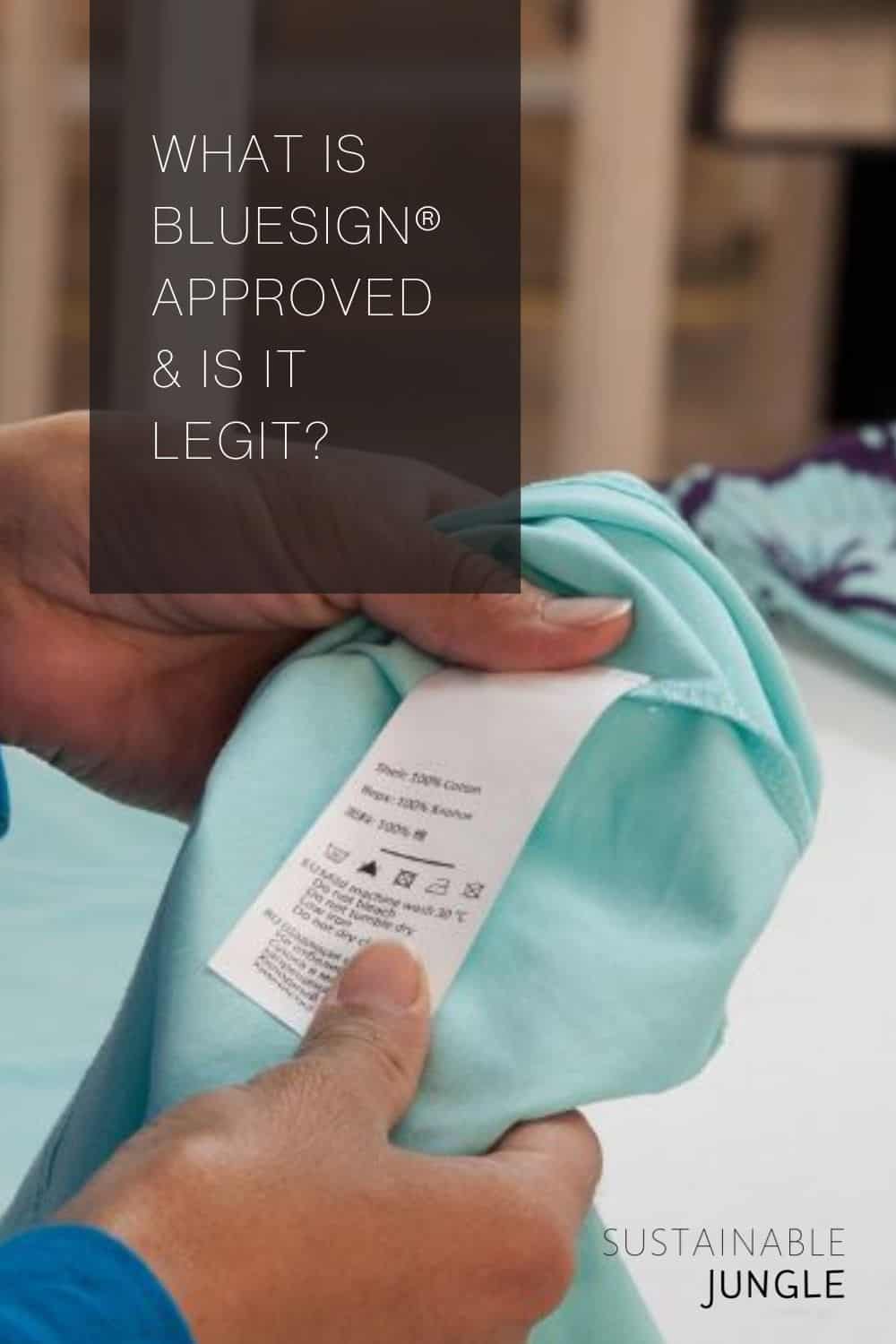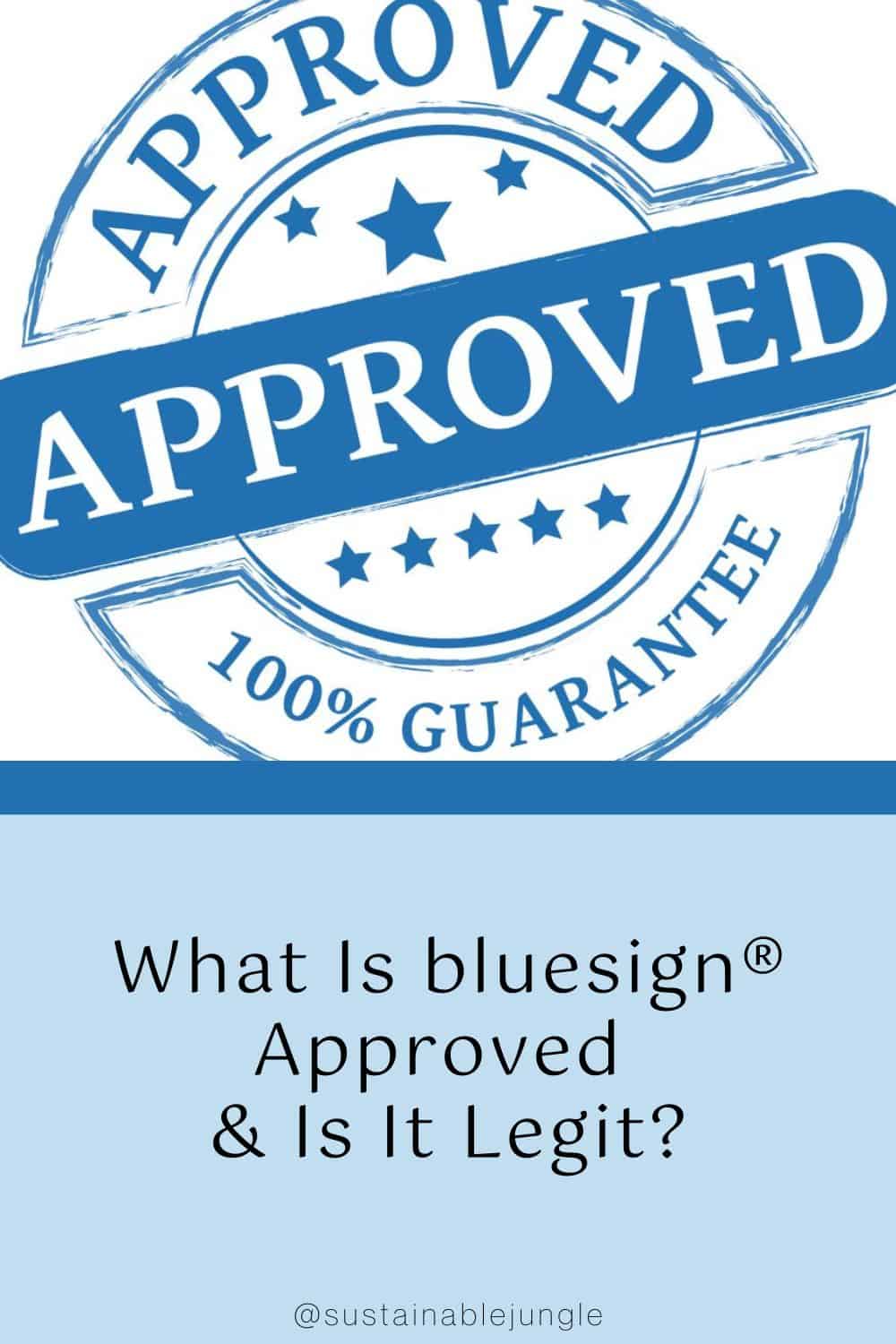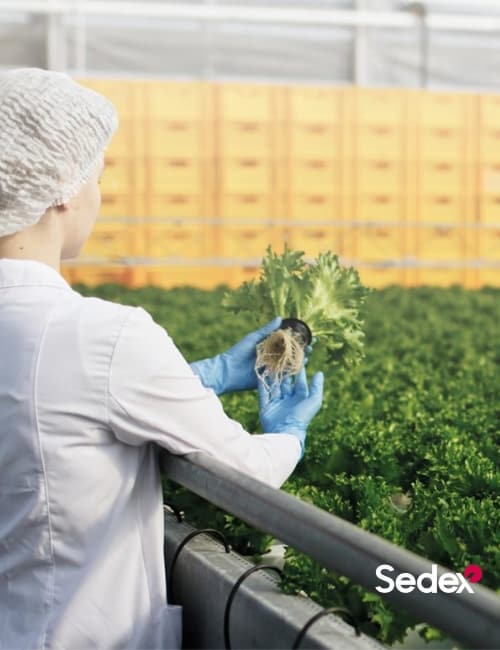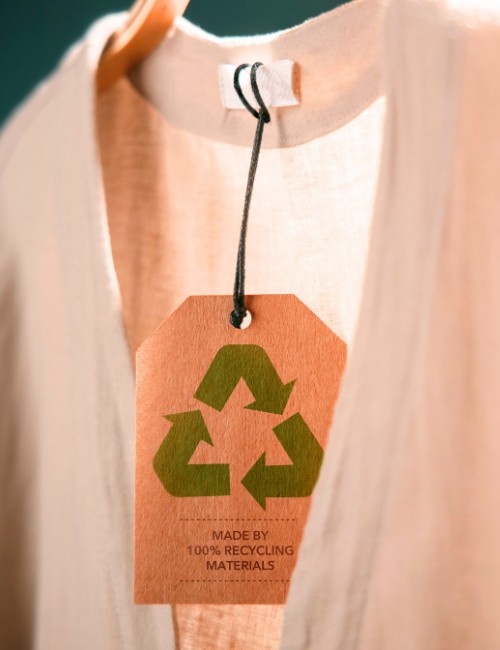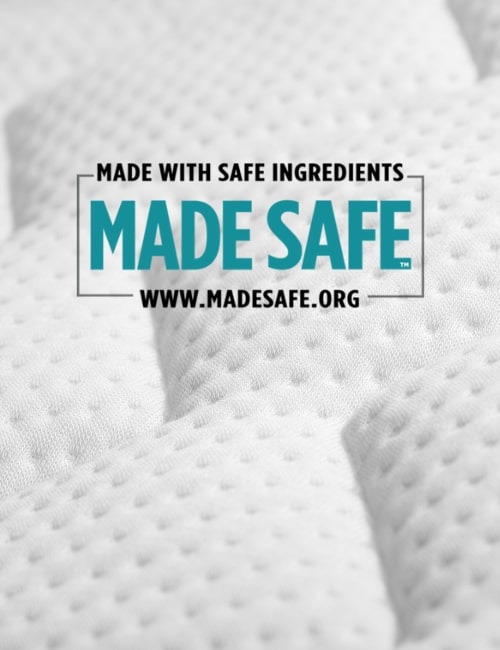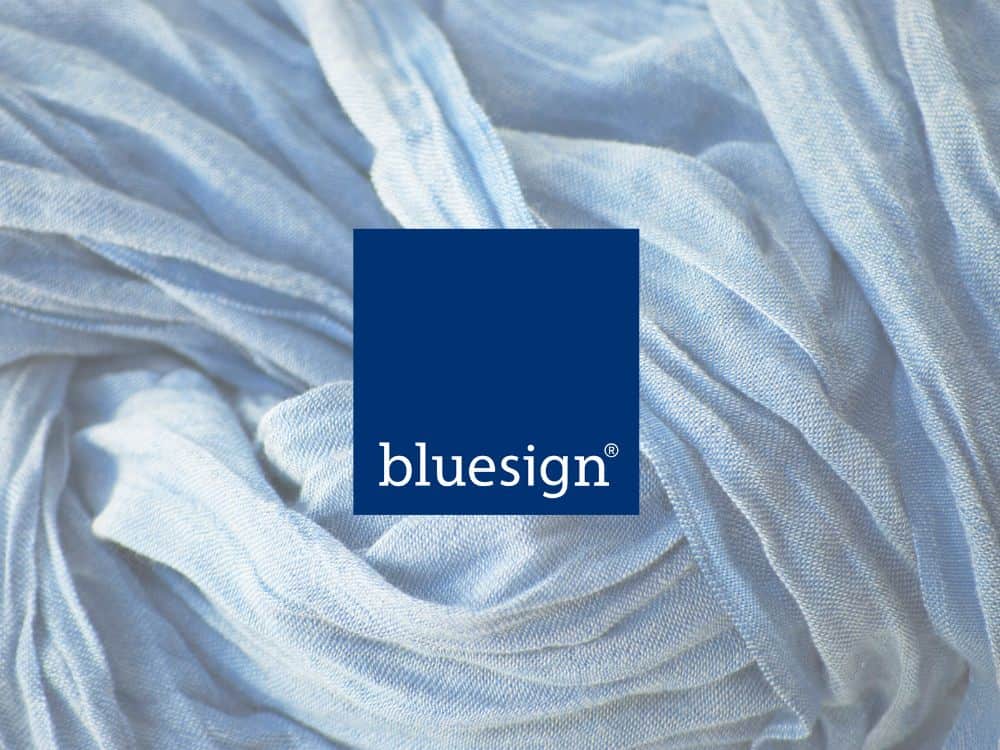
What Is bluesign® Approved & Is It Legit?
bluesign® is one of the best known labels in existence today for ensuring chemical safety and consumer safety when it comes to the textile industry and textile supply chain.
But what does bluesign® approved mean? More importantly, is bluesign® legit?
After all, even the most reputed sustainability and manufacturing certifications have seen their hints (and sometimes more) of greenwashing (looking at you, B Corp and GOTS!)
As consumers, we should appreciate certifications for their intention of taking some of the guesswork out of responsible brand research.
That said, we should also realize they are not infallible.
In the following, we dive into answering the question, “What is bluesign® certification?”, providing the most up-to-date research and details, along with any controversies worth being aware of.
1. What Is bluesign® Approved?
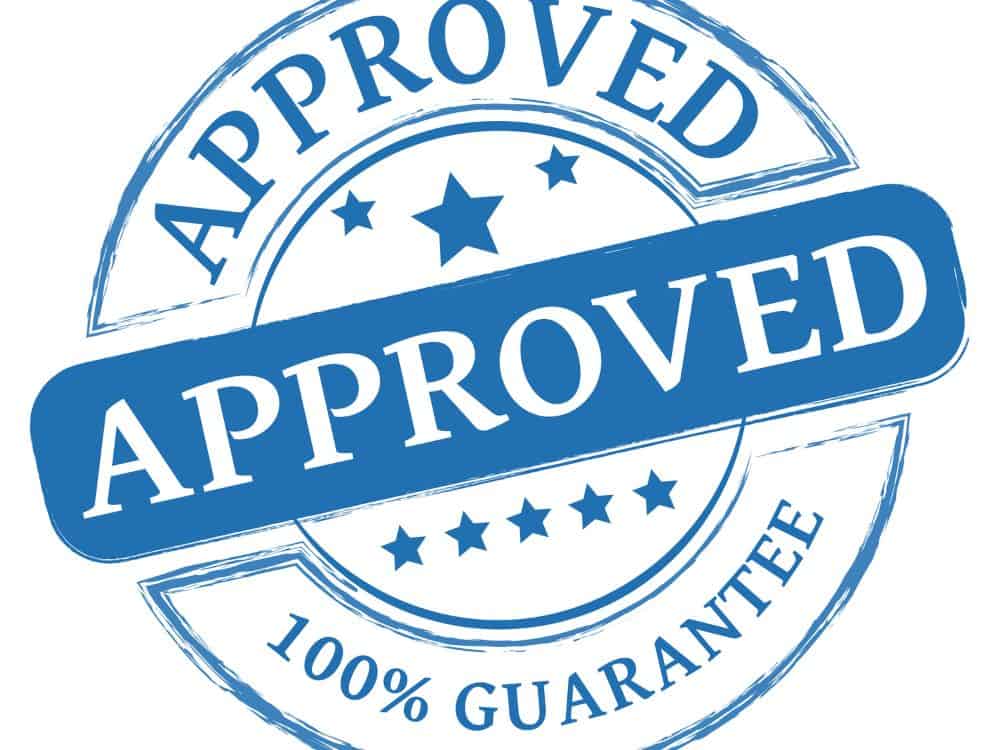
bluesign® is one of the world’s most respected voluntary textile and apparel standards to ensure material safety, production safety, and sustainability:
“The bluesign® SYSTEM unites the entire textile value chain to reduce impact on people and the planet.”
Based in Switzerland, the bluesign® seal is almost more of a “system” than a standard: to bear the mark, a garment must go through an approved supply chain every step of the way.
The concerns of bluesign® are three-pronged. Consumer safety against harmful chemicals is their top mandate, followed by safety of workers along the supply chain, and then minimized impact on the environment.
What does bluesign® certified mean?
While “bluesign® approved” and “bluesign® certified” are used interchangeably, the former is the officially correct term.
To be considered bluesign® approved clothing, garments must use 90% bluesign® approved fabric, and 30% approved accessories (if applicable).
If a company achieves these marks across their whole product line, they’re considered bluesign® approved brands. As you might imagine, there aren’t many.
The idea is continuous improvement of sustainable textile production over time, eventually using 100% bluesign® approved materials.
What is a bluesign® approved product?
If you hadn’t guessed, the bluesign® logo is reserved exclusively for textiles, such as:
- Clothing, apparel, textiles, and prints
- Decorative materials, components, accessories, labels
- Home textiles and upholstery
- Fabrics, yarns, fibers
- Chemicals, dyes, coatings, linings, trims
They’ve yet to develop a labeling system for footwear, toys, medical supplies, hygiene products, and whole furniture pieces.
Because the bluesign® standard covers the entire production process, every step is certified:
- Sites of production
- Fiber manufacturers
- Textile and garment manufacturers
- Chemical suppliers
- Down/feather processors
- Leather processors
- Zipper, button, or other accessory manufacturers
When shopping for bluesign® approved fabrics, you will find there are two different labels:
- “Contains materials that meet the bluesign® criteria”: Some, but not necessarily all, of the materials in that given product meet the bluesign® standard.
- “Product meets the bluesign® criteria”: The entire product coincides with the bluesign® certified meaning.
2. How Does bluesign® Work?
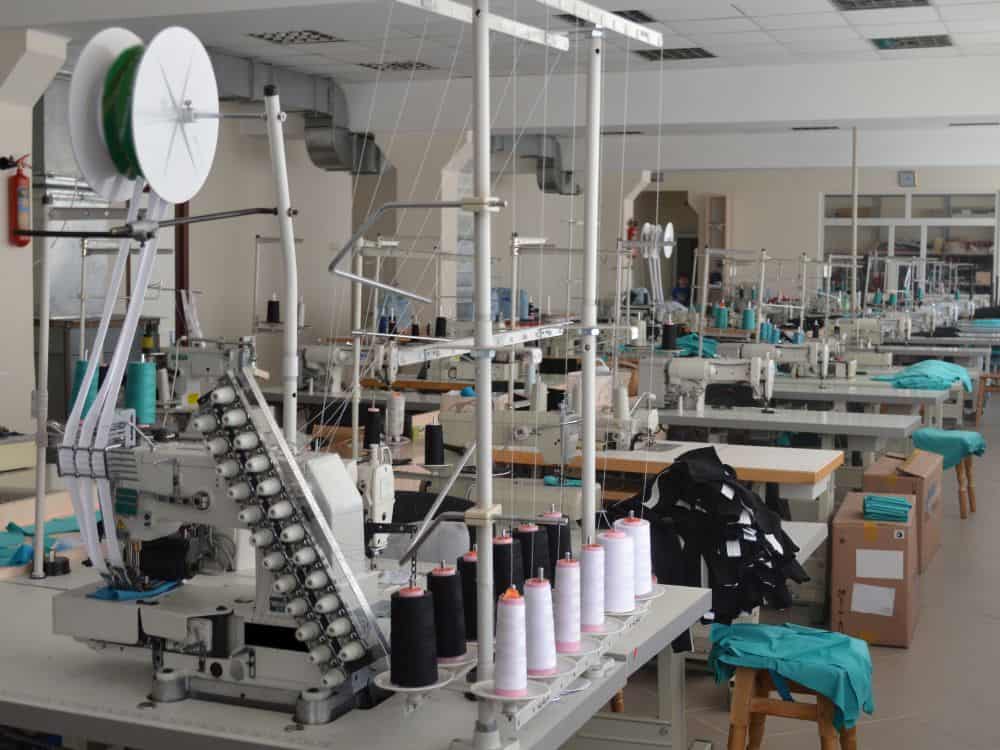
bluesign®’s goal is to provide a system and framework for sustainable garment and textile production that is free of toxic chemicals and substances along the entire supply chain.
A brand or manufacturer makes the choice to become bluesign® approved, meaning they agree to completely overhaul their manufacturing process until all chemicals, processes, and materials are deemed “safe” for consumers, workers, and the environment.
bluesign® criteria is based around five principles to ensure trust and transparency:
- Resource efficiency: Minimal impact to environment
- Consumer Safety: Garments and products are produced with minimal health threat to consumers and workers
- Water Emissions: Limited contaminated wastewater and the development of closed-loop systems are ensured
- Air Emissions: Exhaust air needs to be reduced and recycled to achieve pollution control
- Occupational Health and Safety: Any chemicals used are to be handled with care
Chemicals are classified among three different categories:
- Blue: safe to use
- Gray: special handling and management systems are necessary
- Black: forbidden harmful substances that must be replaced
If forbidden chemicals are detected in the supply chain, they work with the prospective bluesign® system partner to replace “black” chemicals with safe alternatives that meet bluesign® criteria.
3. What are the bluesign® technologies used?
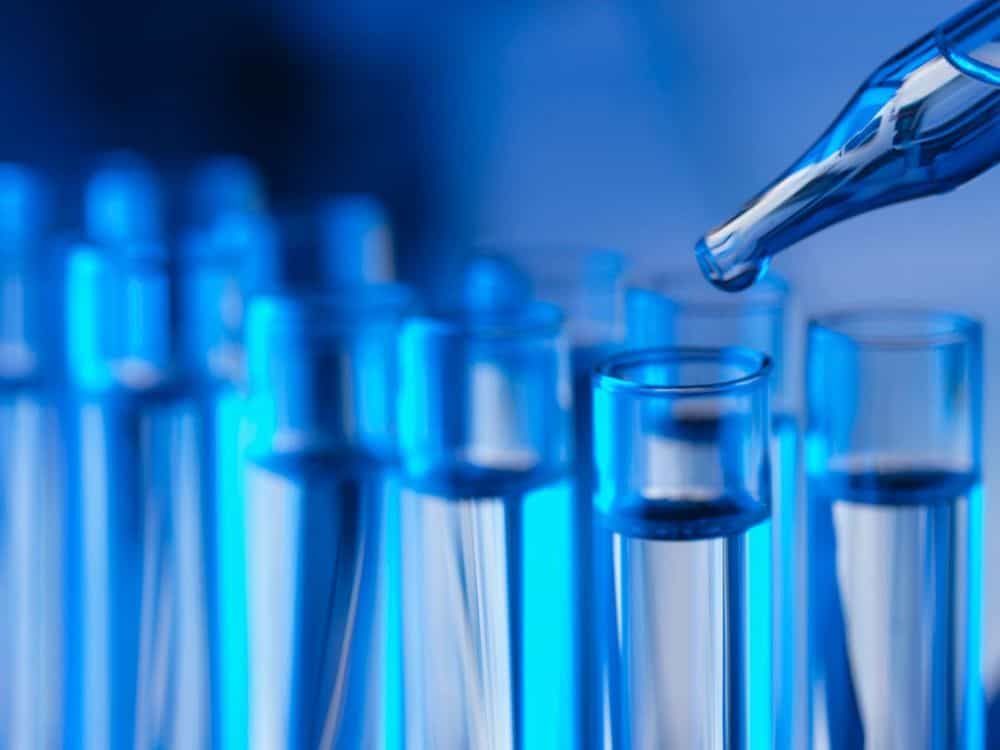
It can be tricky for a brand to evaluate all the raw materials and textiles involved in a complicated manufacturing pipeline.
This is where bluesign® technologies aid in the testing, auditing, and analyzing of different chemicals and fabrics.
The label uses specific science-based chemical assessments to look at the potential hazards of more than 20,000 chemical formulations to assign to their blue, gray, or black categories.
When forbidden chemicals are detected, the label provides alternative chemical suppliers.
In fact, their various bluesign® CUBE tools are designed so both consumers and brands can have access to greener products. These include the bluesign® FINDER database of bluesign® certified suppliers and the more comprehensive database in the textile industry of over 11,000 safe and alternative chemicals.
For almost fifteen years, primary bluesign® system partners have included SGS Network, which is a global leader in inspection, testing, and certification. With almost 90,000 employees globally and more than 2500 laboratories and facilities worldwide, SGS is one of the largest inspection agencies.
It is through SGS that all verification and testing occurs.
To learn more about bluesign® technologies’ sustainable chemistry, this video uncovers a lot for those fashion science nerds out there.
4. The Process Behind bluesign® Certified Brands
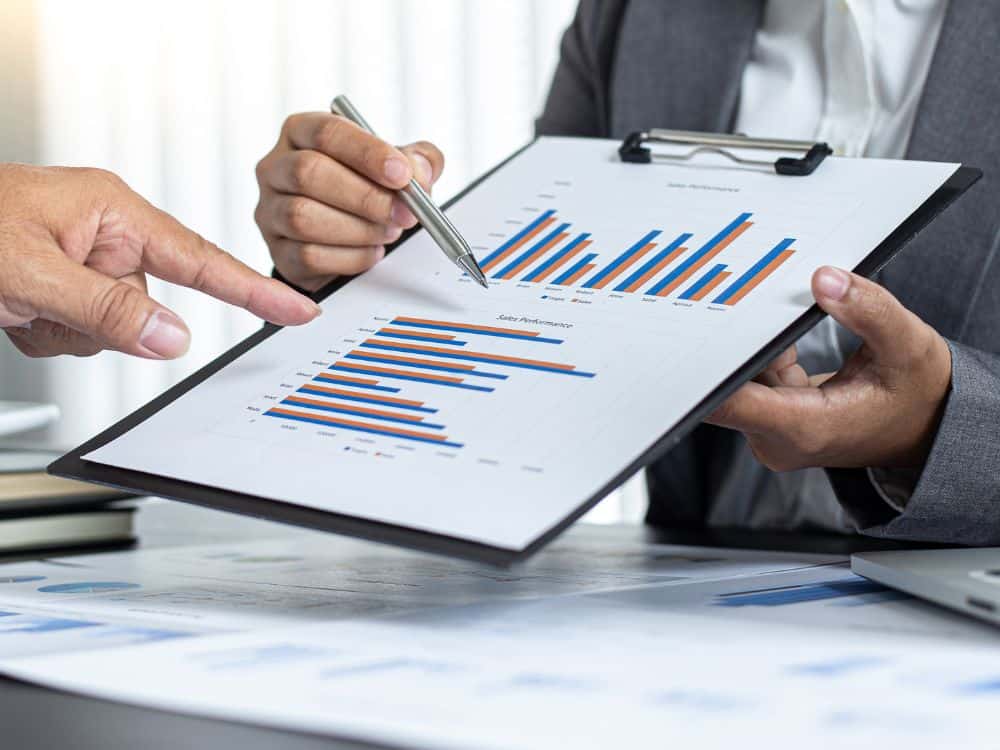
While exact steps vary slightly based on industry sector, hopeful bluesign® certified manufacturers must meet the same “main milestones”:
- Initial assessment based on the Clean Factory approach
- Signing the bluesign® SYSTEM PARTNER agreement
- Addressing any identified concerns or mandatory improvements to the manufacturing process within a specific time frame
- Continual improvement in compliance with a provided road map
Once granted bluesign® certification, the system ensures continued compliance through regular road map progress checks, regular chemical product testing, mandatory chemical inventory list (CIL) reporting, and complete reassessment every three years or less.
The bluesign® system aims to “ensure credibility and a high degree of effectiveness” and “foster the reliability of the trademark” through additional:
- Traceability of all bluesign® certified clothing, fabrics, and chemical products.
- Random spot testing of a final product
- Unannounced company visits
5. Criticisms Of The bluesign® System
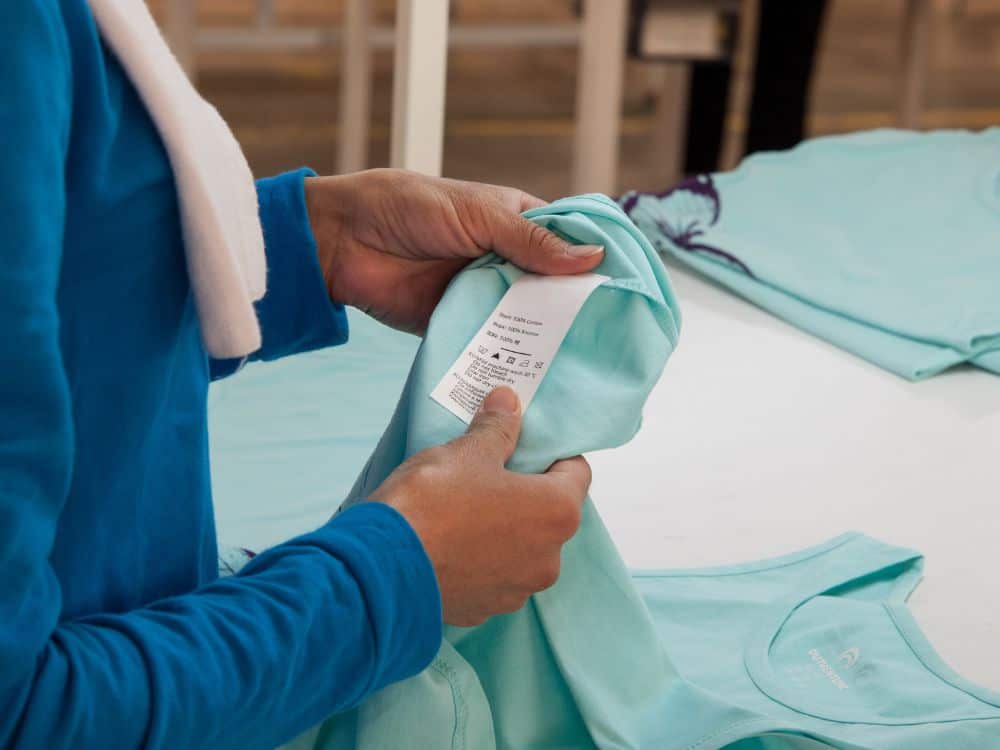
Last year, the sustainability campaign group Changing Markets Foundation released a fairly damning report about the environmental impact of the fashion industry and the ineffectiveness of its various sustainability certifications.
Included in the controversial report was a harsh look at bluesign®, along with nine other popular certification schemes (like WRAP, EU Ecolabel, Higg Index, and Cradle2Cradle).
The report, called “License to Greenwash”, purports that bluesign® (and others) do little more than “facilitate greenwashing”, citing the main issues as a lack of ambition, accountability, and oversight.
The crux of the issue, according to Changing Markets, is that while the number of certifications grows, so too does the fashion industry’s worsening impact. This is indicative that bluesign® and others are “not fit for purpose”.
The report calls these certifications “schemes” to sweep the injustices of the fashion industry under the proverbial rug:
“By acting as a sophisticated greenwashing apparatus, brands, customers and policymakers are lulled into a false sense of security by these initiatives and led to believe that action is being taken.
“By being collectively convinced that corporations have the solutions in hand, more systemic measures such as regulation and pushing for greater accountability and transparency are overlooked.”
bluesign® responded to the allegations and, we’ve got to admit, it’s a word salad that doesn’t really say much of actual value at all…
6. Is bluesign® Sustainable?
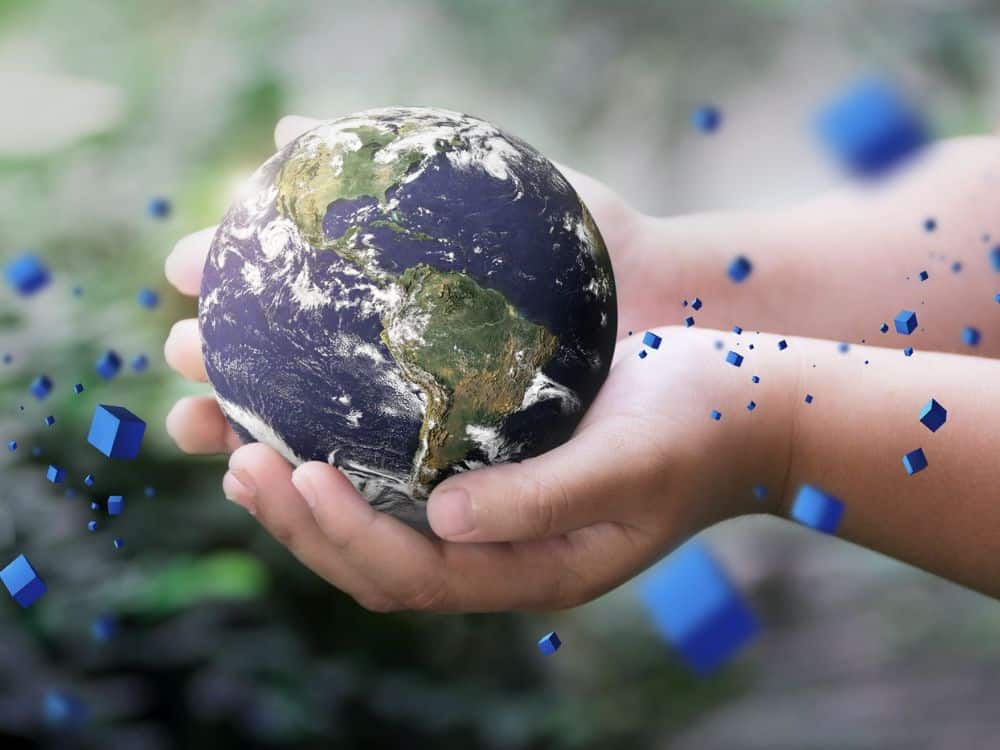
While “License to Greenwash” is a buzzkill for one’s faith in sustainability certifications, we’re not writing off bluesign® just yet. Afterall, it takes a lot of time and effort to reshape the system we’re all somewhat responsible for.
For example, their tools and databases—like the aforementioned bluesign® FINDER, which anyone can create an account and use for free—are a significant step toward arming both consumers and manufacturers with the information needed to make more sustainable decisions.
These brand and chemical databases also serve their own functions to ward against greenwashing of brands who might perhaps claim a certain chemical is safe.
While it’s important to pressure certifications, groups, and brands alike to do better, we also don’t want to poo-poo the good these labels do actually achieve.
Sustainable living is all about progress over perfection, after all.
Afterall, one of the core mandates of bluesign® is a commitment to consistently achieving better. We’d like to think the organization is doing just that, though we can agree more transparency regarding specific brand assessments would be a welcome addition.
As always, we encourage readers to do their own research before ever placing blind faith in any sustainability certificate or claim.
7. bluesign® System Partners & Brands
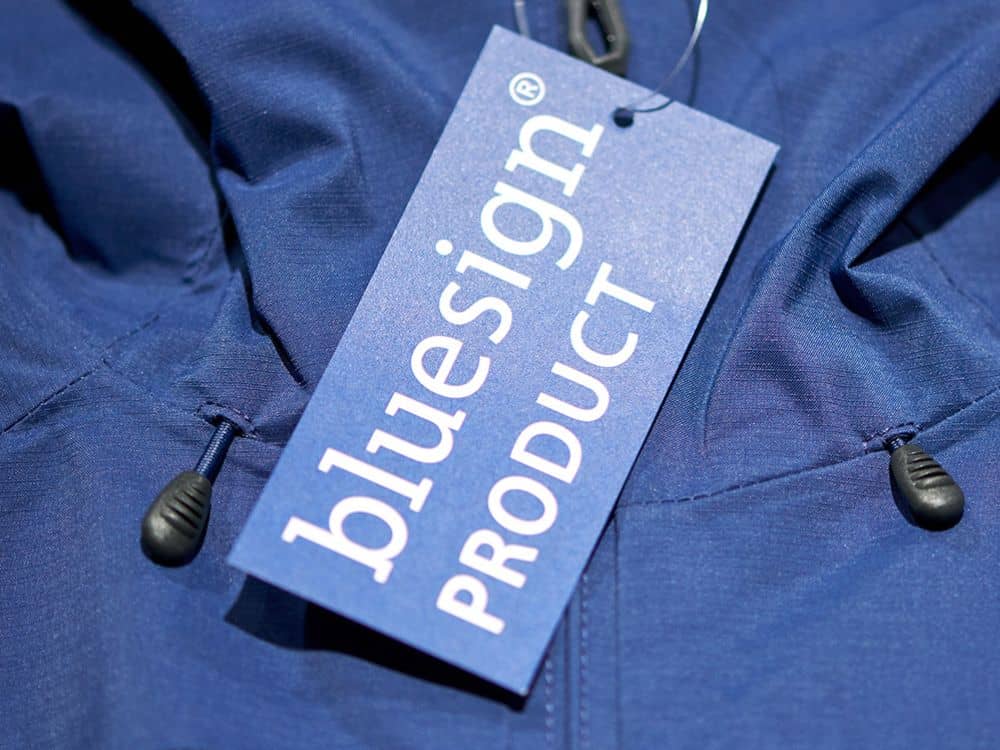
That said, let’s explore some sustainable brands that do use the bluesign® system in their product lines.
The bluesign® logo is becoming especially increasingly common among sustainable outdoor clothing brands, where otherwise lesser sustainable materials—like synthetic fabrics and waterproof coatings in the likes of sustainable winter coats—are still somewhat necessary to achieve the desired garment function.
With bluesign®, brands can at least make sure those fabrics have a minimal chemical impact, such as opting for fluorocarbon-free water repellent coatings.
How many companies in the outdoor industry are bluesign®?
More than you might think. In fact, you can filter for bluesign® products when shopping for outdoor equipment on REI.
Here are some of our favorites brands using the system:
- Patagonia: The OG bluesign® system partner that helped develop the label. As one of the longest standing sustainable companies around, a vote from them for this certification builds our confidence in it, too.
- prAna: 35% of their line consists of bluesign® clothing, with the brand pledging to use 80% bluesign® materials by 2030.
- tentree: This certified B Corp also uses bluesign® materials for a few items, like their sustainable rain jackets and puffers.
- Allbirds: Not all of this top-rated sustainable fashion brand’s garments are bluesign®; however, they do offer a number of lines that are.
- Toad&Co: Offer select bluesign® certified outdoor clothing. Garments that aren’t at least bear non-toxic OEKO-TEX certification.
Did you know we Have a Newsletter?
We cover the latest in sustainable living, fashion, zero waste, beauty, travel, finance and more…
Final Thoughts On The bluesign® System
In summary: what does it mean to be bluesign approved?
At the very least, it means a brand is trying to reduce its chemical impact, thus producing more environmentally friendly textile products and manufacturing processes.
It’s debatable just how effective those efforts are, but even if bluesign® criteria are more lax than they should be, anything is an improvement on the otherwise lawless use of hazardous chemicals in the textile and fashion industry.
Cheap synthetic fibers now represent two-thirds of all clothing made, which is in large part why the rate of clothing consumption has more than doubled in the last twenty years.
Organizations like bluesign® exist to draw attention to this issue, and to help carve a new, more sustainable path forward.
While the bluesign® system could stand some improvements to most effectively tackle the fast fashion crisis, certifications that push to clean up our global supply chains and encourage healthier materials for humans and the earth are still a win to us at SJ.
That said, as responsible consumers we should continue to ask important questions like, “Is this really helping?”, and pressure certifications and brands alike to do more than lip service.
If you’ve found this article helpful, please share! That way, we can ensure certifying bodies know we’re paying attention and demanding they continue improving.
Pin these:
